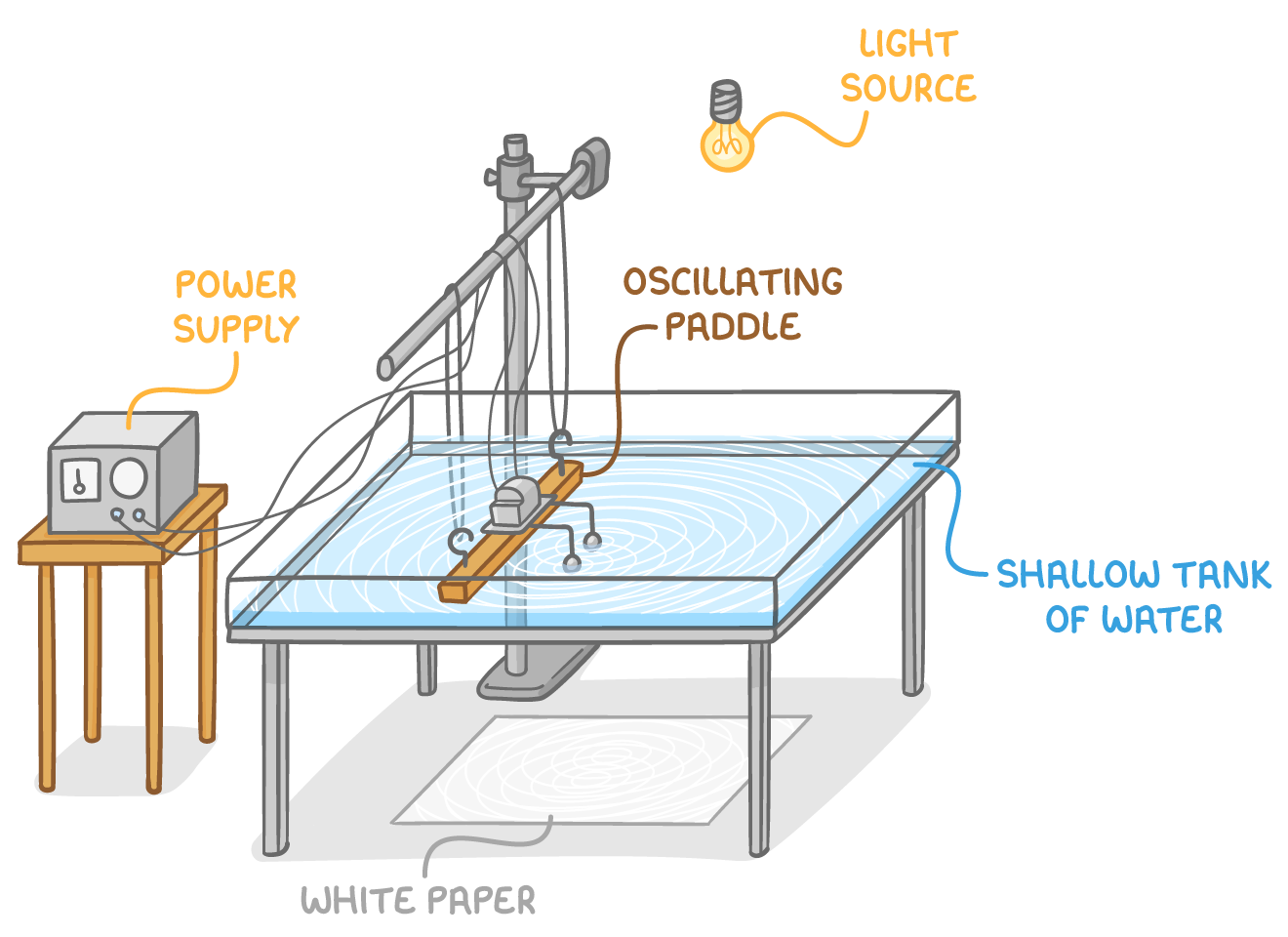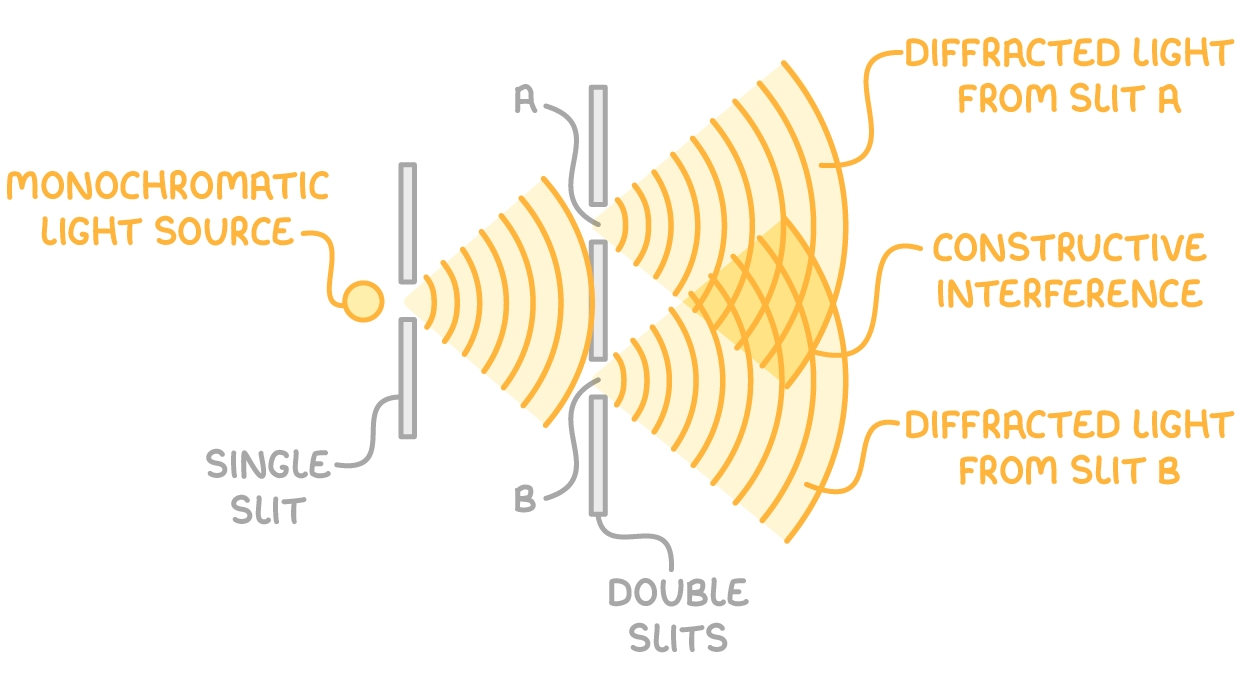Young's Double Slit Experiment
This lesson covers:
- Demonstrating two-source interference with water, sound, and electromagnetic waves.
- Young's double-slit experiment to demonstrate interference with light.
- Using two microwave transmitters to demonstrate two-source interference.
- Calculating wavelengths from interference fringe spacing.
Demonstrating two-source interference

Two-source interference occurs when waves from two coherent sources combine. We will explore this phenomenon with different types of waves.
Coherent sources have the same frequency and a fixed phase relationship, which is essential for sustained interference.
Water waves:
- Use two dippers driven by the same oscillator (vibrator) to create waves.
- This setup ensures the waves from the two dippers are coherent.
Sound waves:
- Connect two loudspeakers to the same audio oscillator.
- This setup ensures the sound waves from the loudspeakers are coherent.
Young's double slit experiment
This experiment uses a single laser source to demonstrate two-source interference:
- Laser light passes through two narrow slits, causing diffraction.
- The slits act as two coherent point sources of light.
- An interference pattern of alternating light and dark fringes appears on a screen.

- Maximas (bright fringes) - Observed where the waves from the two slits are in phase and they superpose constructively.
- Minimas (dark fringes) - Observed where the waves from the two slits are out of phase and they superpose destructively.
| Phase difference | Path difference | |
|---|---|---|
| Bright fringe | 0 or n2 | 0 or n |
| Dark fringe | (n + 0.5) | (n + 0.5) |
Where n = 0,1,2,3,4...
Fringe spacing
The spacing of the fringes is dependent on the wavelength of light, distance between the slits and the screen, and the slit spacing:
w = sλ D
Where:
- w = fringe spacing (m)
- λ = wavelength (m)
- D = distance from slits to screen (m)
- s = distance between slits (m)
Worked example - Calculating fringe spacing
Calculate the fringe spacing when a double slit experiment is performed using light of wavelength 650 nm, with the slits placed 1 m away from the screen and the distance between the slits being 0.25 mm.
Step 1: Convert mm to m
To convert from mm to m, divide by 1,000
0.25 mm = 2.5 x 10-4 m
Step 2: Formula
w = sλ D
Step 3: Substitution and correct evaluation
w = 0.25×10−3650×10−9×1=0.25×10−6650=2.6 mm